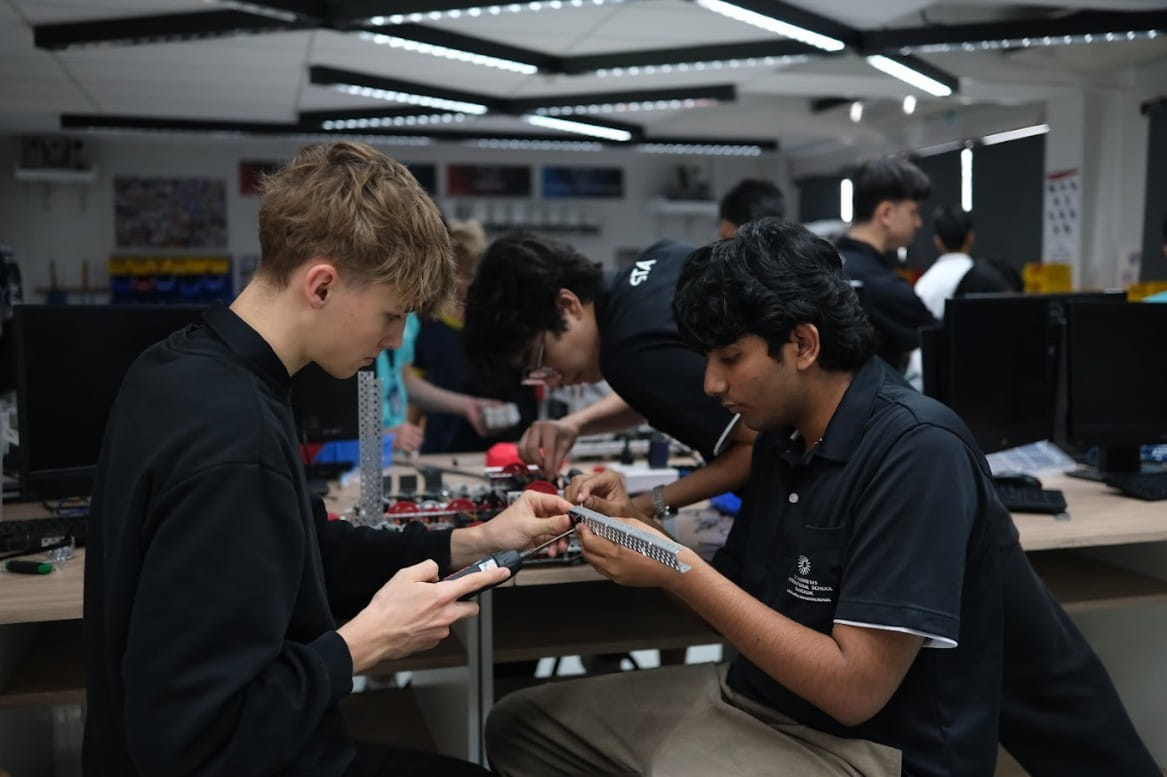We use cookies to improve your online experiences. To learn more and choose your cookies options, please refer to our cookie policy.

At St Andrews, we place a strong emphasis on learning beyond the classroom. This ethos is particularly evident in our curricula, especially as students approach Key Stage 4 and 5 (Year 10 to 13), as they begin to plan and prepare for life after school.
True understanding blossoms when students can apply their academic learning to tangible projects. For example, in our IGCSE Design Technology course, students are introduced to Computer-Aided Design (CAD), a vital tool used for 3D modelling in many industries, including architecture, engineering (mechanical, civil, electrical, aerospace), product design and manufacturing, automotive, fashion design, animation and gaming, medical devices, and jewellery design.
For Design Technology projects, students begin with a design brief, in which they must apply classroom theory to pressing societal issues. This encourages them to research and sketch initial concepts to tackle genuine engineering challenges. This foundational stage then seamlessly transitions into digital modelling using CAD software. Through CAD, students learn to refine their ideas with precision, meticulously test proportions and functionality, and generate high-quality visuals. These digital creations are not just exercises; they serve as blueprints for prototypes, products, large-scale events, and scenarios.
One such challenge is the problem of urban traffic in Thailand. A significant consequence of these traffic jams is that ambulances often lack the space and time to reach patients in need of emergency care. Current modes of transport in the cities, such as cars or motorbikes, are simply too slow to meet the speed requirements for saving lives efficiently. Mathias, now in Year 12, developed a rapid-response medical device using CAD-modelling for his Year 11 IGCSE Design Technology design brief.
The concept involves a plane chute delivering essential equipment and instructions to a patient, enabling nearby individuals to administer emergency care. This system offers significant advantages, as it can reach a patient in under two minutes, significantly faster than an ambulance, which may take over ten minutes to arrive.

Another example that demonstrates a strong connection between classroom learning and practical application is Mathias’s work on VEX Robotics events under the guidance of Mr Rob, VEX Robotics Lead at St Andrews. He used CAD to design 3D models of the event spaces for the upcoming RAT (Robotics, Automation & Technology for Education) Foundation and VEX Robotics competitions. Such models are essential for accurate equipment orders and ensuring seamless event safety and execution since the events will host more than 500 participants from all over the world.

These are not just simple drawings, but represent genuine engineering challenges that require students to apply classroom theory to a real-world scenario. It involves considering technical requirements, such as optimal space utilisation, smooth pedestrian flow, and stringent safety considerations.
This commitment to practical application is a cornerstone of our educational philosophy, ensuring that our students develop not just a theoretical understanding of complex concepts but also the crucial skills and unwavering confidence required to innovate and create effectively in a rapidly evolving world.